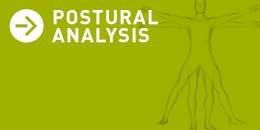Learn how to determine the structural origins of pain and other dysfunctional patterns.
This course is suitable for all therapists, fitness trainers, yoga teachers and anyone who offers techniques to support people, who deal with pain.
Postural analysis provides factual, structural data, which is one of the most missing pieces in healthcare. MRI, X-ray and other diagnostics provide clarity on parts of the body, which is important, but these diagnostics lack the complete structural picture, which is provided by the NBT postural analysis course.
From postural analysis the therapist can create very individualized treatment protocols. Also very individualized muscle strengthening and stretching programs for each client can easily be created. The therapist can determine the structural causes of tension-based pain patterns. This allows for treating the root of the problem.
What is postural analysis?
Postural analysis is the viewing and measuring of the body along its gravitational planes (sagittal, coronal, and horizontal planes). It is a factual investigation of the structure of the body. During the course postural analysis is performed with the person standing, sitting, supine and prone. Each position reveals different distortion patterns. These patterns give clarity about the main tension in tissues.
All findings are recorded on postural analysis charts. The charts will then be used to map out the tension patterns in the soft tissues (muscles, tendons and ligaments). Most often it is the distortion patterns that reveal the cause of pain and other dis-ease processes in the body.
Whether you are a bodyworker, yoga instructor, pilates or exercise trainer postural analysis will help you to create precise and personalized treatment and training protocols for each one of your clients.
As part of the course each participant will receive a booklet that shows simple to complex postural distortion patterns. Each illustration shows the main contracted muscles causing those distortions.
Even bringing the body just a few degrees closer to efficient alignment can make the difference toward living in pain-free balance.

